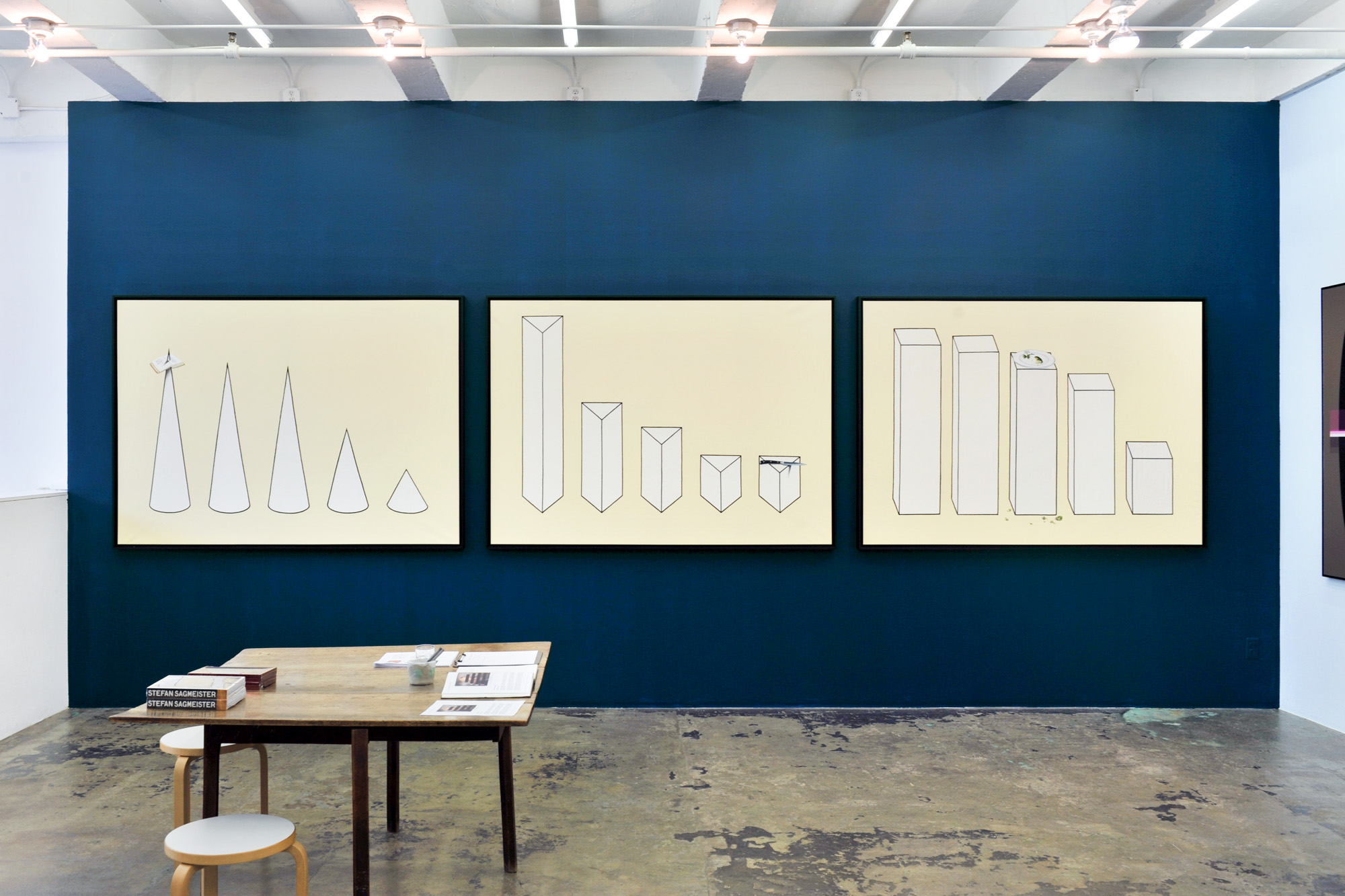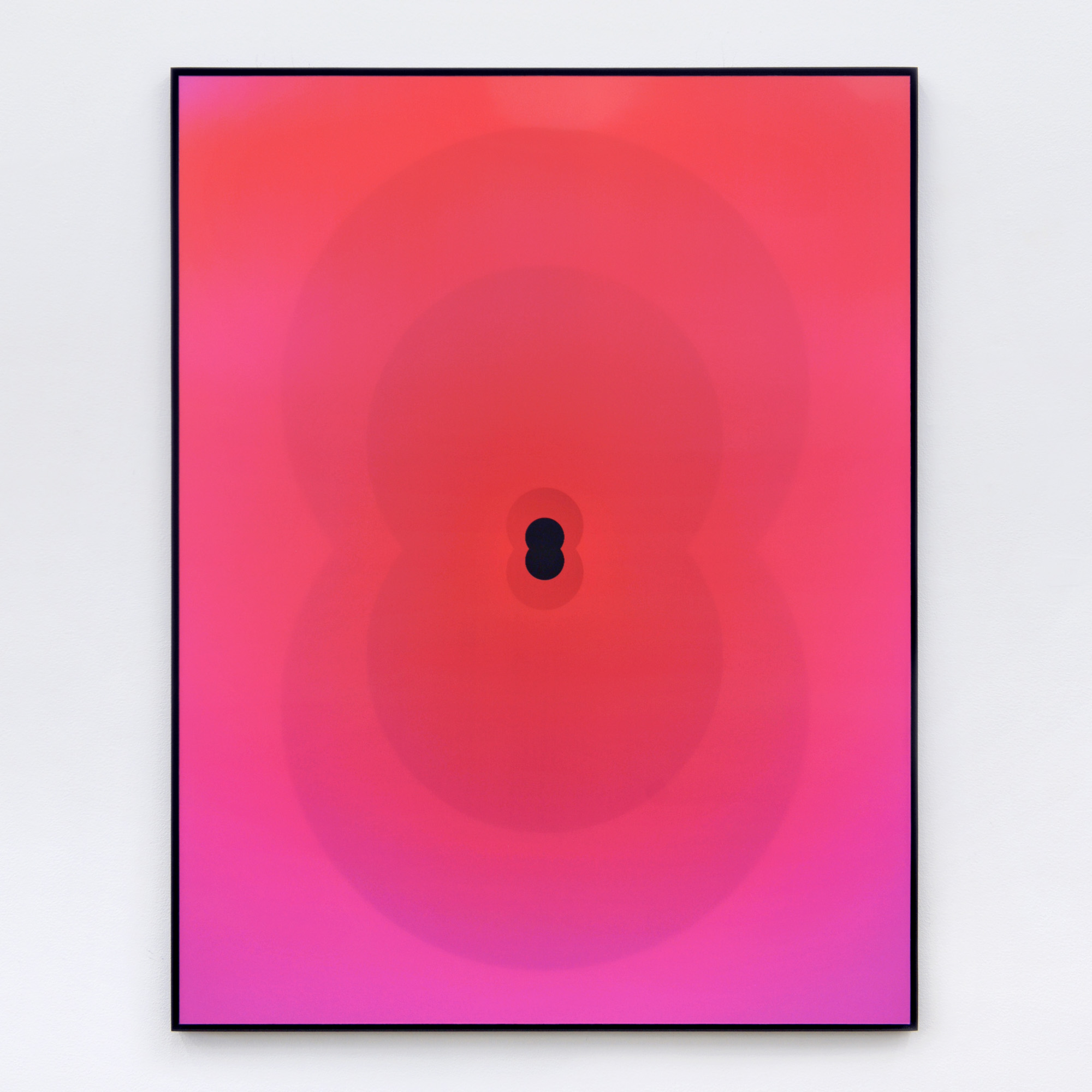Shows
Stefan Sagmeister’s “Beautiful Numbers”


While a designer-in-residence at the American Academy in Rome in 2019, Stefan Sagmeister encountered a lawyer who said that the recent global rise of authoritarianism signals the end of liberal democracy. Provoked by this claim, Sagmeister began to research the subject and found that 200 years ago there was only one democracy, the United States, while in 2021 there are 96 democratic countries. Interpreting this as a positive sign, he became interested in other statistics that suggest the world is a better place now, contrasting the picture of doom that the mainstream media and internet tend to paint. “Beautiful Numbers,” Sagmeister’s solo exhibition at New York’s Thomas Erben Gallery, debuts a series of works reflecting the data that he collected. Indicating changes that have unfolded over a 100-year period or longer, the findings are represented as bold shapes on canvases, lenticular prints, hand-painted drinking glasses, and embroidered fabrics.
The show’s highlights were the 14 mixed-media works that embed geometric forms into 19th-century paintings—some of which were unsold from Sagmeisters’ great-grandparents’ antique shop and were stored in the attic of his family home in Bregenz, Austria, where he eventually found them. Though there are no indications on the pieces themselves about what the graphics mean, the compositions stand independently as striking images, with the information decoded on a corresponding checklist. Woman I, (1900/2000) (all works 2021) is a portrait of an aristocratic woman with three inlaid circles. A yellow dot at the top represents global female voting rights in 1900; a medium size pink disc in the center of her forehead symbolizes the number of women voting in 1950; and a much larger purple sphere covering the lower half of her face and upper chest denotes how more women had the right to vote in 2000 than ever before. Famine I, (1860/2000) employs a stunning, Dutch-style still-life of blooming flowers to show an universal reduction in victims of starvation; the number of related deaths in 1860 is indicated with a thick yellow outline of a square, whereas the declining number in 2000 is represented by a smaller area of red. Carbon I, (1800/2020), a seascape with three bright shapes, was an anomaly in the show, in that it compares the volume of carbon dioxide emitted between 1800 and 2020 from three geographical areas, instead of charting changes over time. The amount released from China, rendered in yellow, is relatively small; the USA’s contribution, in blue, is much larger; and the volume from Europe, illuminated in red, is massive.

The embroidered works, created in collaboration with Yua Jiang Ping of Su Embroidery Studio in Suzhou, were equally exquisite. Three intricately stitched pieces respectively capture the illiteracy and poverty levels worldwide, and the number of homicides in Italy, as they decreased over a 200-year period, from 1820 to 2020. The decline in illiteracy is conveyed through five diminishing cones, with the tallest piercing an open book at its peak; the reduction of homicides is illustrated with five triangular prisms, with the shortest one presenting a knife; and the drop in poverty is communicated through five columns, with a plate of broccoli on the middle one.


Less aesthetically compelling than the handmade works but still fascinating in the information that they outline, the lenticular prints present graphs that shift in slices of color to illustrate such things as the decline in the number of people in the world dying from natural disasters and the drop in income inequality in the United Kingdom from 1900 to 2000. Meanwhile, fine-crafted beer glasses sporting hand-painted leaves present changes in environmental issues.
Taken as a whole, the exhibition highlighted optimistic information about the improving state of the world through different imageries, making for a rich and dynamic presentation that reminded audiences of a long view of the world and its transformations.
Stefan Sagmeister’s “Beautiful Numbers” was on view at New York’s Thomas Erben Gallery from April 10 to May 15, 2021.
Paul Laster is a New York desk editor of ArtAsiaPacific.







